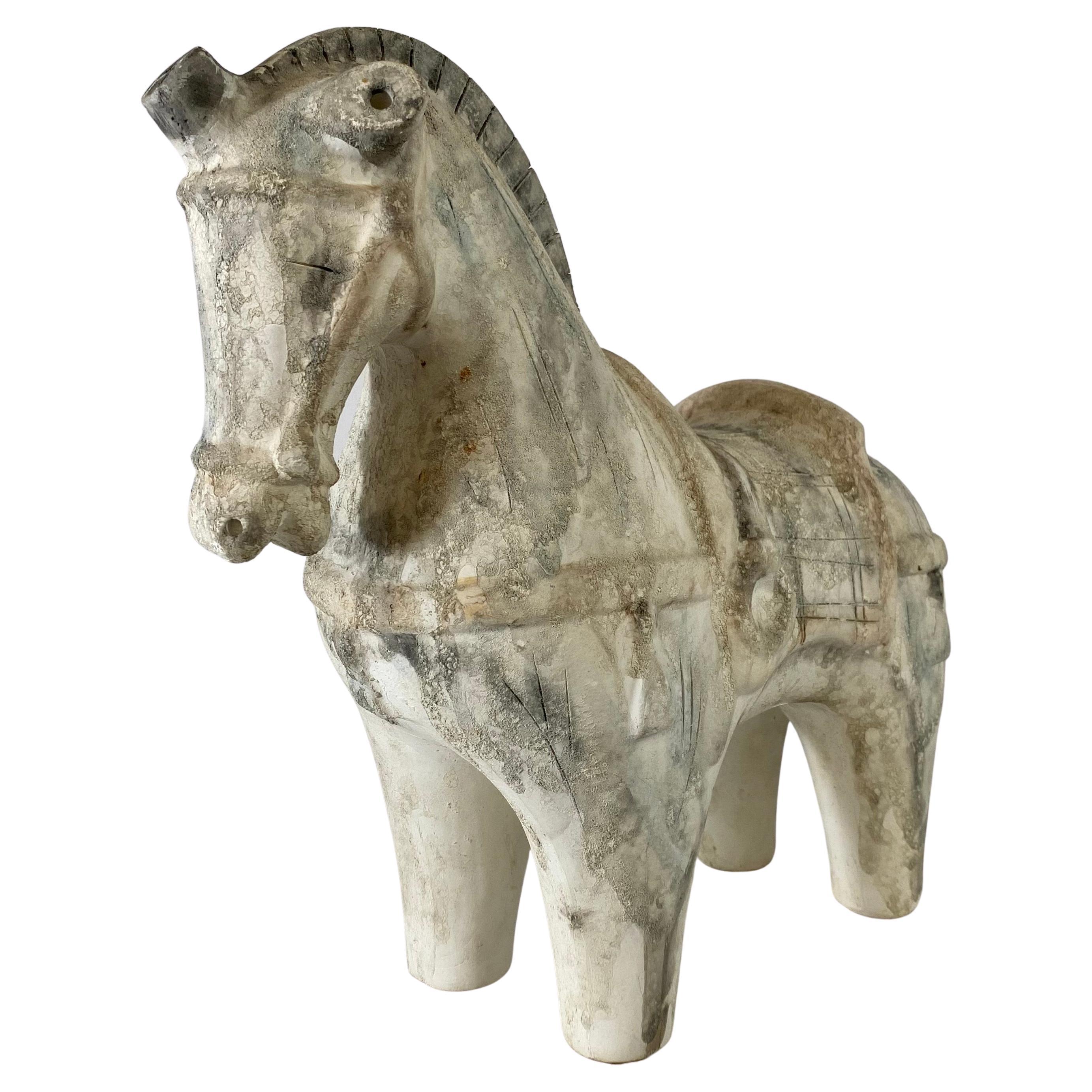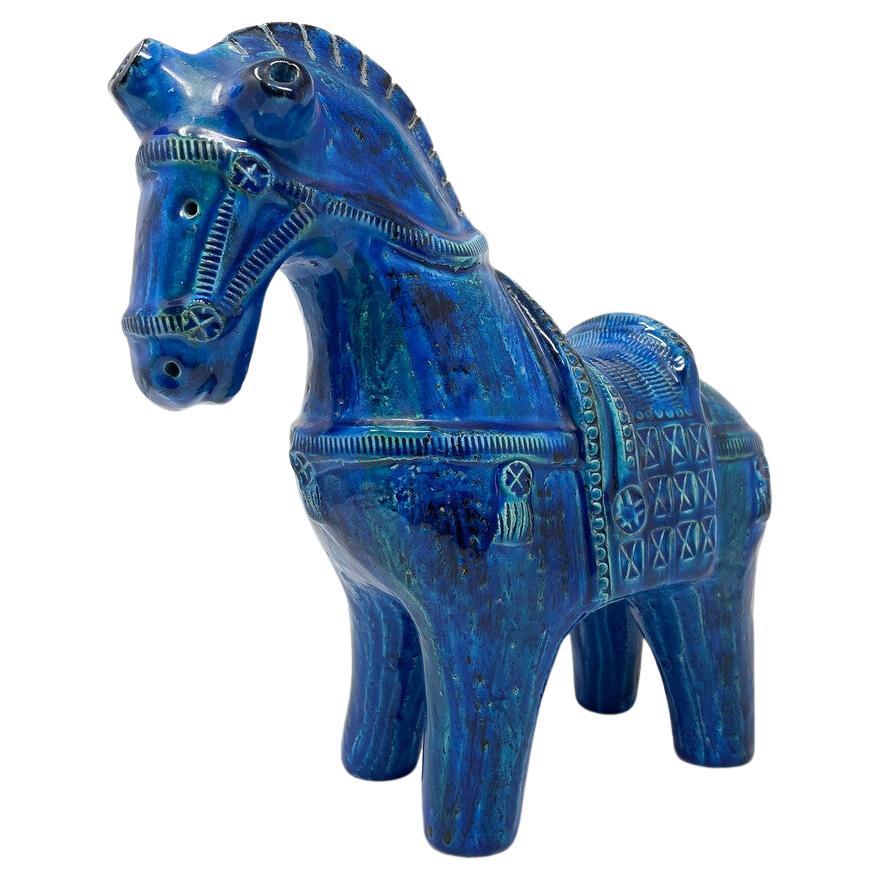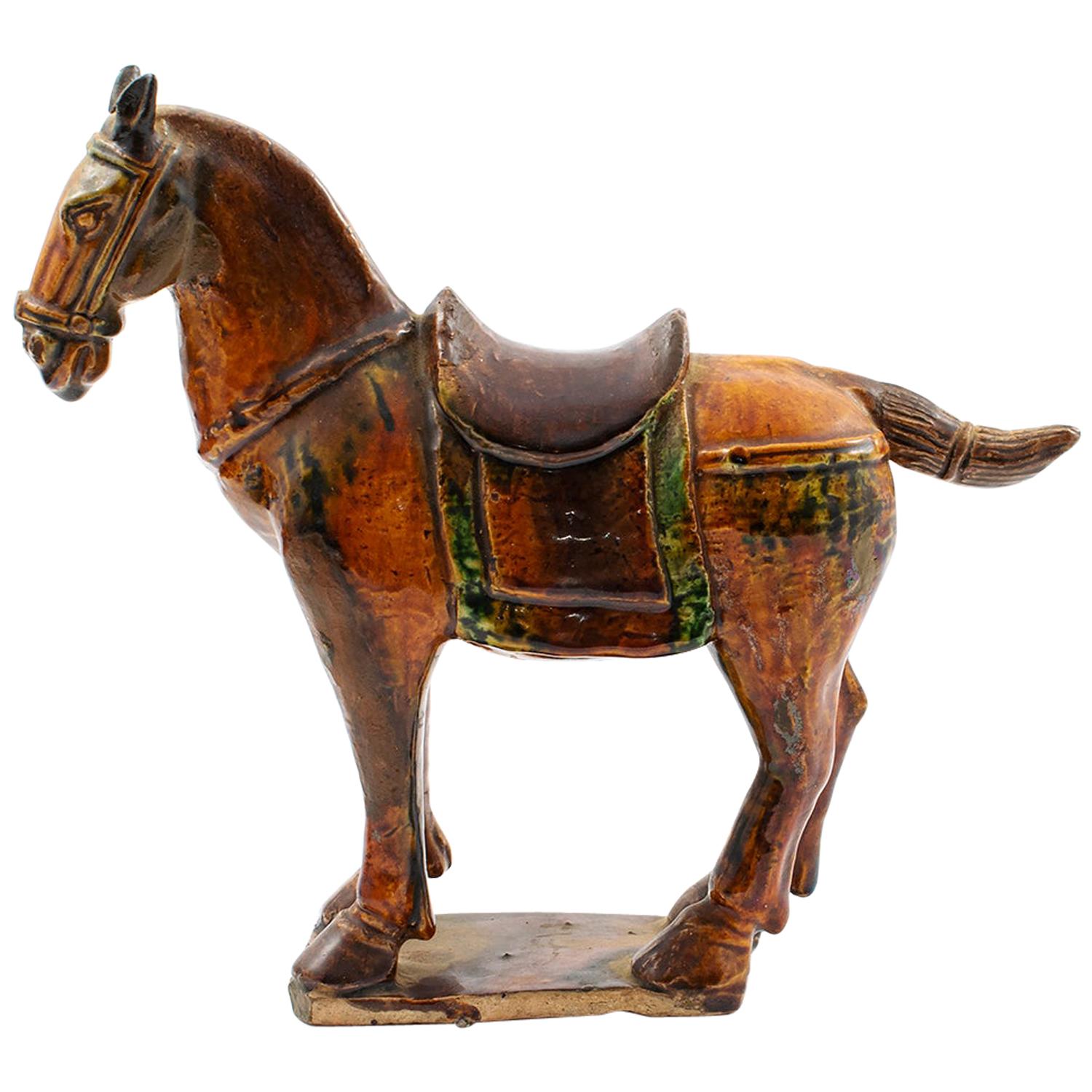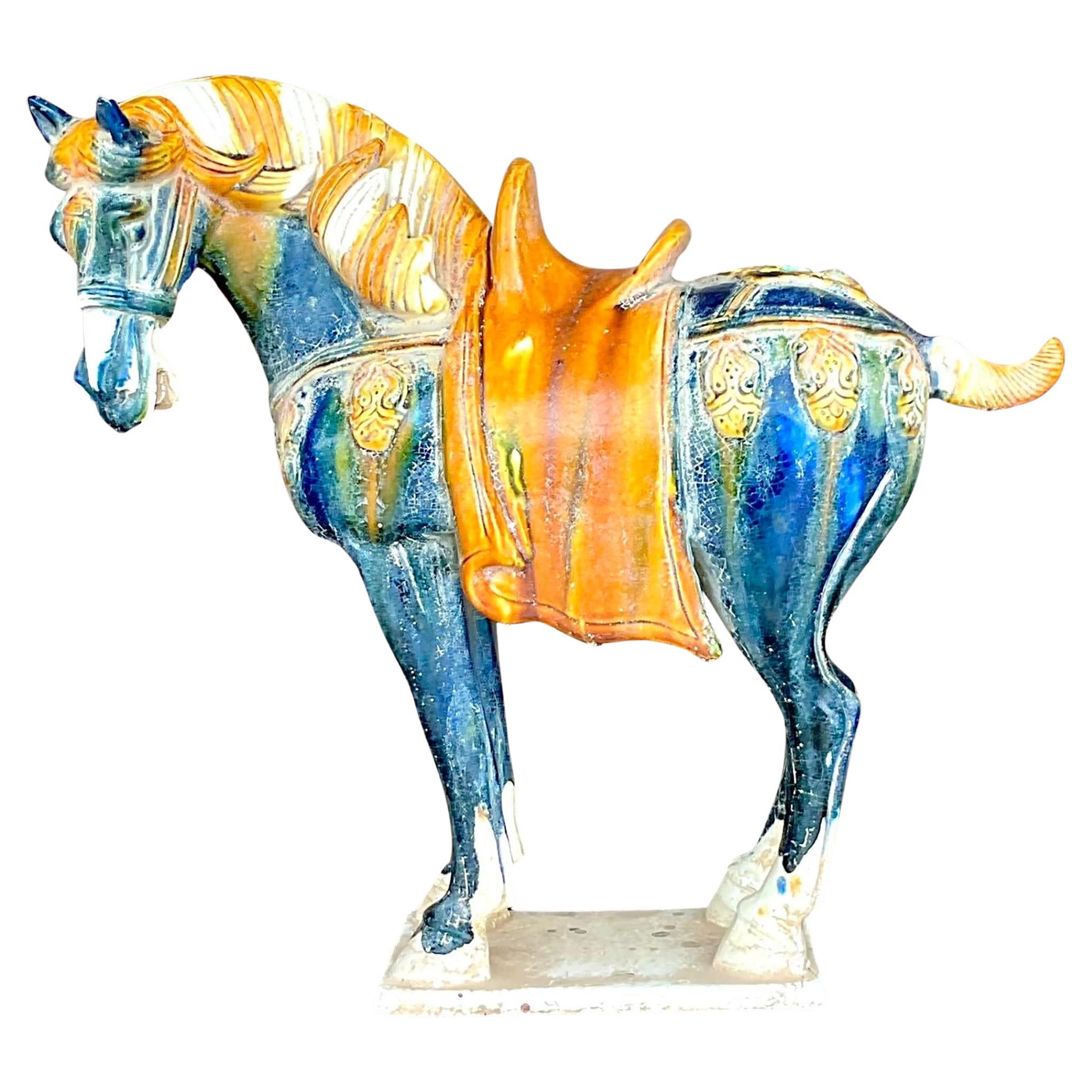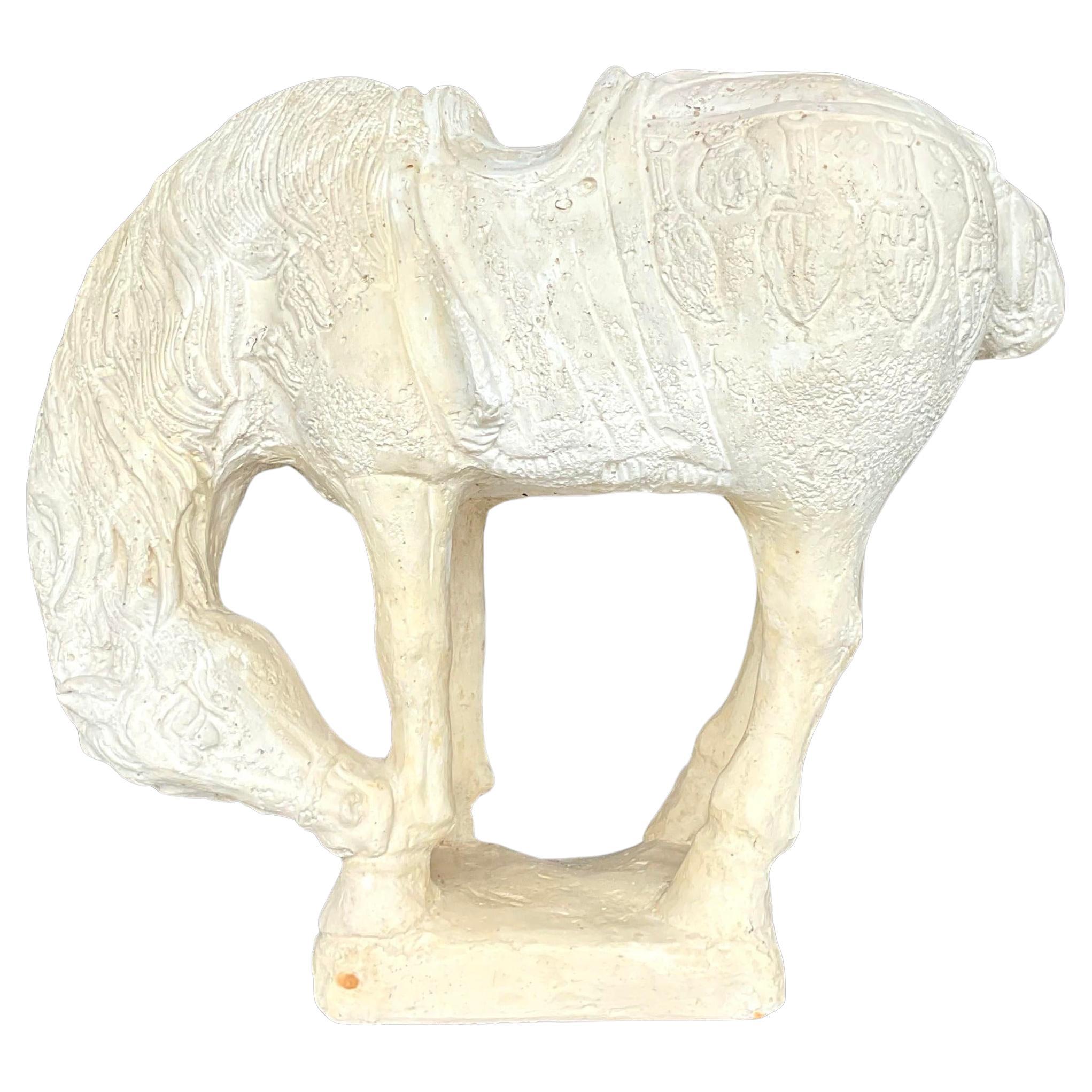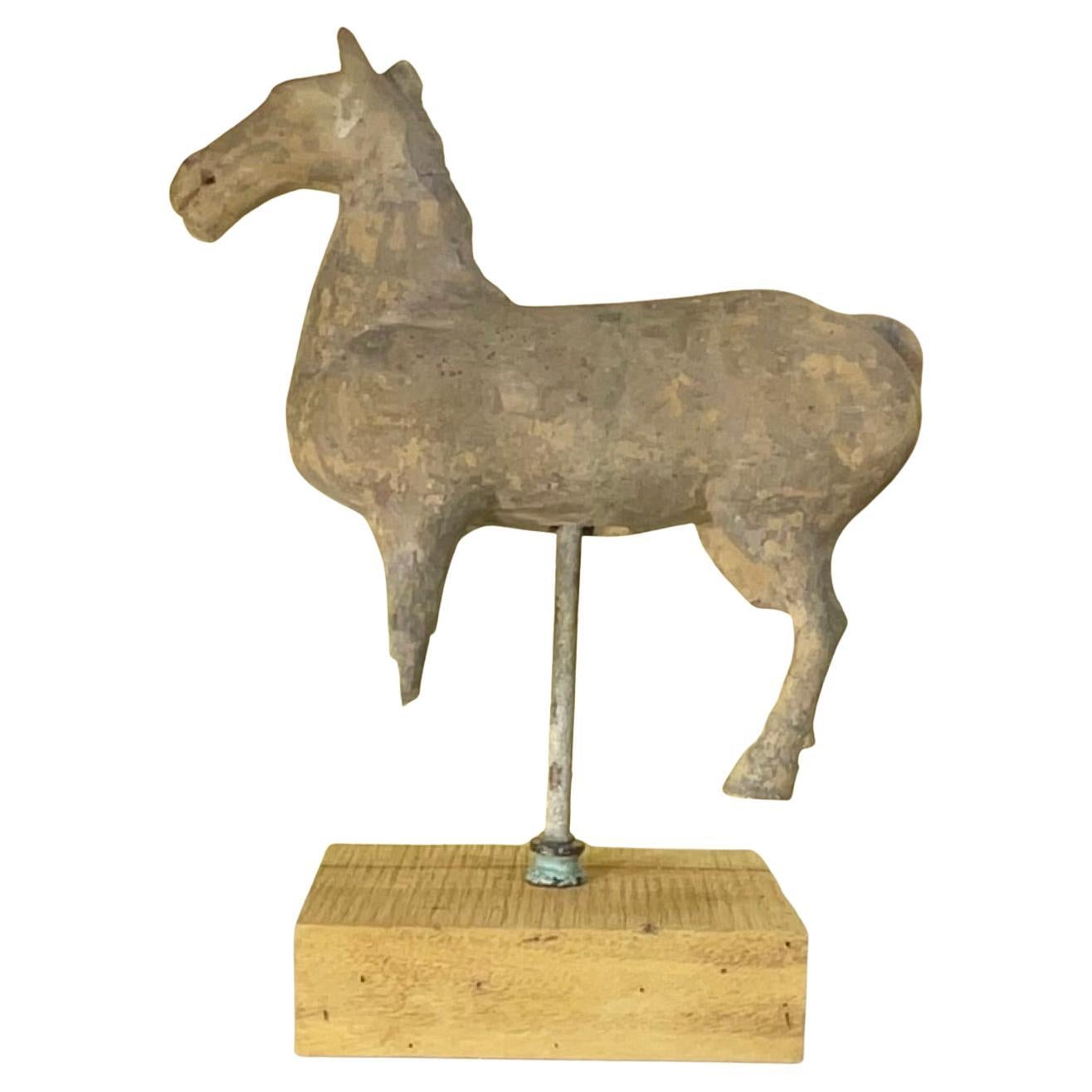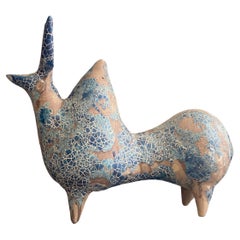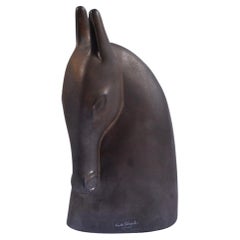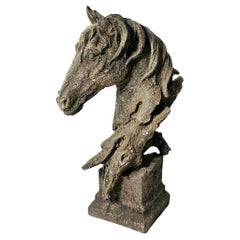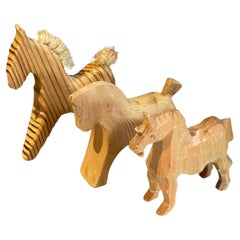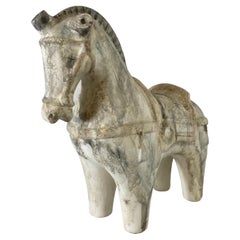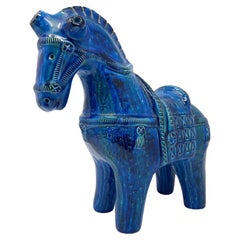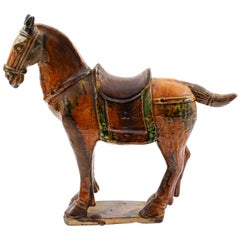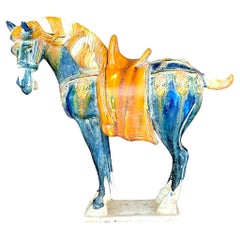Items Similar to Hand Ceramic Abstract Horse Sculpture Decorative Ancient Pixiu Glazed Home Decor
Video Loading
Want more images or videos?
Request additional images or videos from the seller
1 of 13
Hand Ceramic Abstract Horse Sculpture Decorative Ancient Pixiu Glazed Home Decor
$1,211.36
$1,514.2020% Off
£880
£1,10020% Off
€1,034.52
€1,293.1520% Off
CA$1,675.71
CA$2,094.6420% Off
A$1,846.75
A$2,308.4420% Off
CHF 966.84
CHF 1,208.5420% Off
MX$22,683.93
MX$28,354.9120% Off
NOK 12,148.49
NOK 15,185.6220% Off
SEK 11,370.02
SEK 14,212.5320% Off
DKK 7,724.14
DKK 9,655.1820% Off
About the Item
Turquoise Blue Hand Ceramic Abstract Horse Sculpture Decorative Ancient Pixiu Glazed Home Decor
In tradition
Anahita, the Persian goddess associated with water, fertility, and wisdom, was often depicted as riding a chariot pulled by four divine horses. These horses were known as "Zurvan," "Urvakhsha," "Bareshna," and "Sparzaya." Each horse held its significance and symbolism within the mythology surrounding Anahita.
In Shahnameh and other epic poems, which reflect the myths, the life of ancient
In Iranian societies, animals and others are important and go beyond their normal
features and status. Myths are truths of the thoughts and ideas of the first people, which are
mixed with different stories and are expressed symbolically and cryptically. The Persian horse has held a place of great prominence and prestige in Iranian culture throughout its rich history. Symbolising power, loyalty, and grace, these horses played a vital role in the ancient Persian empires. This blog post will take you on a fascinating journey through time, exploring the majestic representation of the Persian horse in Iranian culture, as showcased in art, architecture, and mythology. Extract, classify and analyze the epic and ritual of this animal.
Horses hold a prominent position in Persian literature as well. Numerous Persian poems, stories, and epics introduce horses as pivotal characters. For instance, the Shahnameh, or the Book of Kings, is a Persian epic poem written by the poet Ferdowsi around 1000 CE. It recounts the history and mythology of Iran, from the creation of the world to the Islamic conquest of Persia. This book encompasses several tales about horses, including the story of Rakhsh, the valiant steed of the Iranian epic hero, Rostam.
One of the many remarkable episodes from the Shahnameh, the Persian epic poem, is the battle between the armies of Faramarz, the son of Rostam, and Mihark, a notorious Turanian commander.
In ancient Persian society, horses played a crucial role in various aspects of life, including politics, the military, and culture. Renowned for their strength, grace, and agility, these majestic animals were symbols of power, victory, and divine favour. Horses carried Persian kings during triumphant conquests and significantly influenced the course of history.
Griffin’s role in Iranian artwork can be described in three historical periods:
Prehistoric era, Achaemenid era, and Sassanid era.
Prehistoric era
The patterns acquired from this period are related to the Marlik Hills, Lorestan, and Ziwiyeh areas. There are also artworks with the figure of combination creatures, including the bird’s head and the body of a four-footed animal from the Amlash Hasanlu area. The figure of the Eagle has also been observed on ancient Persia's pottery and cylinder seals. Eagles with widespread wings are painted among the Ilam cylindrical seals and jellies of silk hills in Kashan. In the Shusha tiles (related to the third millennium), the golden medallion is represented by the figure of an eagle with open wings, as well as Lorestan’s bronze works, artefacts near Amlash and Marlik, and Hasanlu’s golden bowl (early 2nd millennium BC) are also decorated with the figure of Eagle. But the oldest Griffin sample in Persian art has been observed on the metal container from the Marlik hill. The history metal cup of Marlik is taken back to three thousand years ago, the end of the second millennium and the early millennium BC. Four gryphons are on the four sides of the upper edges embossed on the Golden Cup. Another example of a Griffin is a small golden jewellery set of eight centimetres in height, derived from the Ziwiyeh of Kurdistan, dating back to the fifth century BC.
Height approx. 28 cm, 15 x 21 cm.
Condition
Excellent Condition.
- Dimensions:Height: 8.67 in (22 cm)Width: 11.03 in (28 cm)Depth: 5.91 in (15 cm)
- Style:Art Deco (Of the Period)
- Materials and Techniques:
- Place of Origin:
- Period:
- Date of Manufacture:1970
- Condition:
- Seller Location:Wembley, GB
- Reference Number:Seller: DEC731stDibs: LU967940278602
About the Seller
5.0
Platinum Seller
Premium sellers with a 4.7+ rating and 24-hour response times
Established in 1980
1stDibs seller since 2013
509 sales on 1stDibs
Typical response time: 1 hour
Associations
International Confederation of Art and Antique Dealers' Associations
- ShippingRetrieving quote...Shipping from: Southampton, Hampshire, United Kingdom
- Return Policy
Authenticity Guarantee
In the unlikely event there’s an issue with an item’s authenticity, contact us within 1 year for a full refund. DetailsMoney-Back Guarantee
If your item is not as described, is damaged in transit, or does not arrive, contact us within 7 days for a full refund. Details24-Hour Cancellation
You have a 24-hour grace period in which to reconsider your purchase, with no questions asked.Vetted Professional Sellers
Our world-class sellers must adhere to strict standards for service and quality, maintaining the integrity of our listings.Price-Match Guarantee
If you find that a seller listed the same item for a lower price elsewhere, we’ll match it.Trusted Global Delivery
Our best-in-class carrier network provides specialized shipping options worldwide, including custom delivery.More From This Seller
View AllStone Horned Bull Sculpture Decorative Objects, Ancient Pixiu Patina Home Decor
Located in Wembley, GB
Hand Created Sculpture Decorative Objects, stone Horned Bull, Ancient Pixiu for Home Decor
In tradition
As for all other Zoroastrian cosmological beliefs, the primary source of info...
Category
Vintage 1960s West Asian Art Deco Animal Sculptures
Materials
Limestone, Gold Plate
$1,365 Sale Price
20% Off
Free Shipping
Antique Sculpture Horse Head Decorative Abstract Figurine ANETTE EDMARK
Located in Wembley, GB
Beautifully stylized horse head figurine with a great balance of harmony, it portrays the beauty of the inner world through love and beauty.
This unique art piece is a great chance to bring your office or home decor and interior the eternal opposites in an everlasting fusion dance.
SCULPTURE, horse figure.
Antique Decorative Figurine ANETTE EDMARK...
Category
Antique Early 1900s Danish Art Deco Abstract Sculptures
Materials
Acrylic, Ceramic
$616 Sale Price / item
31% Off
Free Shipping
Antique Horse Head Sculpture Iron Figurine Busts Home Decor Plinth Metal Head
Located in Wembley, GB
Beautifully created antique horse head figurine with a great balance of harmony, it portrays the beauty of the inner world through love and beauty....
Category
Antique 1880s Greek Art Deco Animal Sculptures
Materials
Metal, Iron, Sheet Metal
$1,079 Sale Price
39% Off
Free Shipping
Wooden Carving Animal Sculptures A Set Of 3 Antique Decorative Horses Figurine
Located in Wembley, GB
Beautifully stylized a set of 3 animal figurines with a great balance of harmony stood, horses portray the beauty of the inner world through pure beauty.
This Valuable unique art pie...
Category
Vintage 1930s Swedish Hollywood Regency Animal Sculptures
Materials
Ceramic, Acrylic, Wood, Fruitwood, Driftwood, Pine, Bog Wood
$429 Sale Price / set
20% Off
Free Shipping
Vintage Hand Carve Sculpture African Blue Marble Stone Figurine Dolphin
Located in Wembley, GB
Beautifully stylized figurine with a great balance of harmony stood, portraying the inner world's beauty through pure beauty.
This Valuable unique art piece is a great chance to bring your office or home decor and interior an artistic characteristic.
Ancient-style Egyptian Dolphin...
Category
Vintage 1930s Zimbabwean Art Deco Figurative Sculptures
Materials
Malachite, Marble
Vintage Ram Candle Holder Decorative Sculpture Brick Red Ceramic with Pattern
Located in Wembley, GB
Handcrafted ceramic candle holder with the candle inside and engraved ram pattern on the body green colour, it is beautiful and luxurious. It can bring warmth to your home interior a...
Category
2010s Australian Art Deco Candlesticks
Materials
Ceramic
$352 Sale Price
32% Off
Free Shipping
You May Also Like
Tang Style Pottery Horse Sculpture
Located in Plainview, NY
A charming Tang style pottery horse sculpture. The subculture is well crafted and shows beautiful patterns and design on the surface with gray ...
Category
20th Century Tang Animal Sculptures
Materials
Pottery
$600 Sale Price
20% Off
Mid-Century Modern Horse Ceramic Sculpture by Aldo Londi, Italy, 1960
By Aldo Londi
Located in Brussels, BE
Mid-Century Modern Horse Ceramic Sculpture by Aldo Londi, Italy, 1960
Category
Vintage 1960s Italian Mid-Century Modern Animal Sculptures
Materials
Ceramic
Late Ming Era Documented Glazed Pottery Horse
Located in Kastrup, DK
An elegant Chinese Ming dynasty pottery figurine depicting a horse in a standing pose with polychrome finish (aubergine, light brown and g...
Category
Antique 17th Century Chinese Ming Animal Sculptures
Materials
Pottery
Vintage Asian Glazed Ceramic Tang Horse
Located in West Palm Beach, FL
Elevate your decor with this Vintage Asian glazed ceramic Tang horse. Featuring exquisite craftsmanship and a rich glaze, this piece brings an elegant touch of Eastern artistry to yo...
Category
Late 20th Century Chinese Animal Sculptures
Materials
Ceramic
Vintage Boho Ceramic Tang Dynasty Horse
Located in West Palm Beach, FL
Bring history to life with this Vintage Boho Ceramic Tang Dynasty Horse. Expertly crafted with intricate details, this piece captures the spirit of ancie...
Category
Late 20th Century American Animal Sculptures
Materials
Ceramic
Exquisite Han Dynasty Ceramic Horse
Located in Delray Beach, FL
Own a tangible piece of history with this captivating antique ceramic horse, a relic , probably from the illustrious Han Dynasty , This beautifully restored artefact offers a uniqu...
Category
Antique 15th Century and Earlier Chinese Animal Sculptures
Materials
Ceramic
